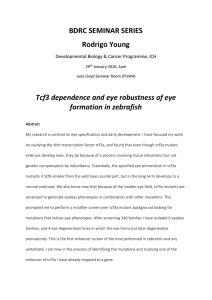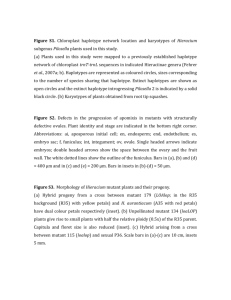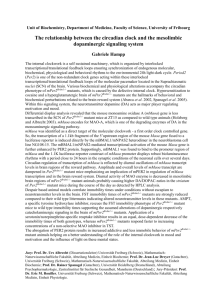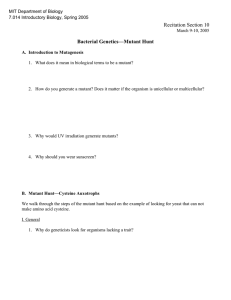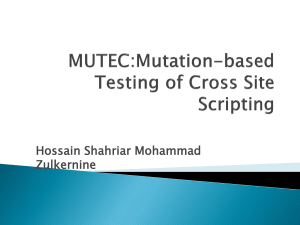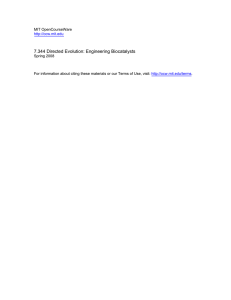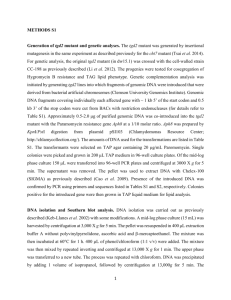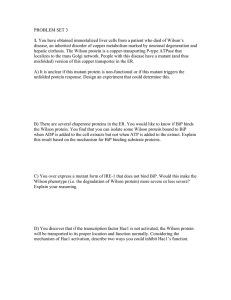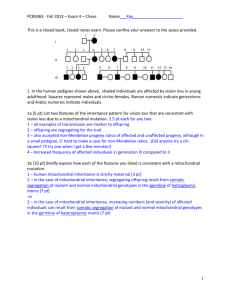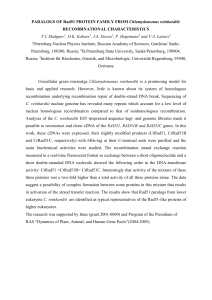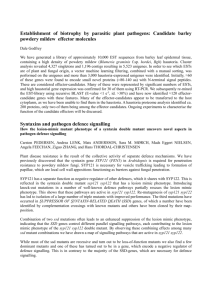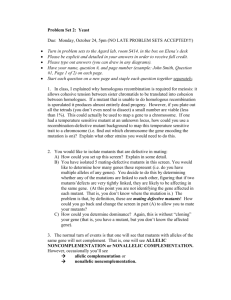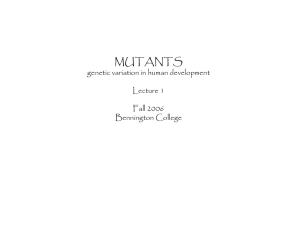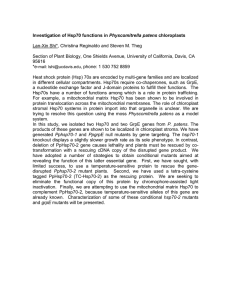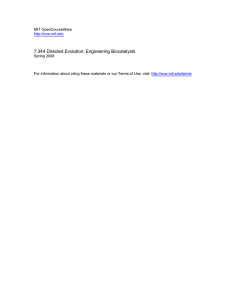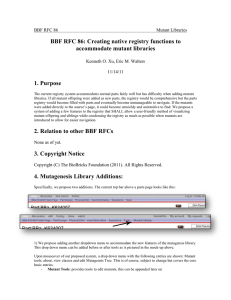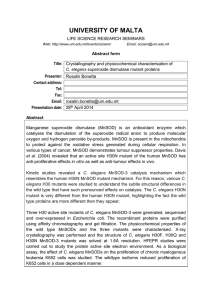A novel forward genetic screen to identify respiratory
advertisement
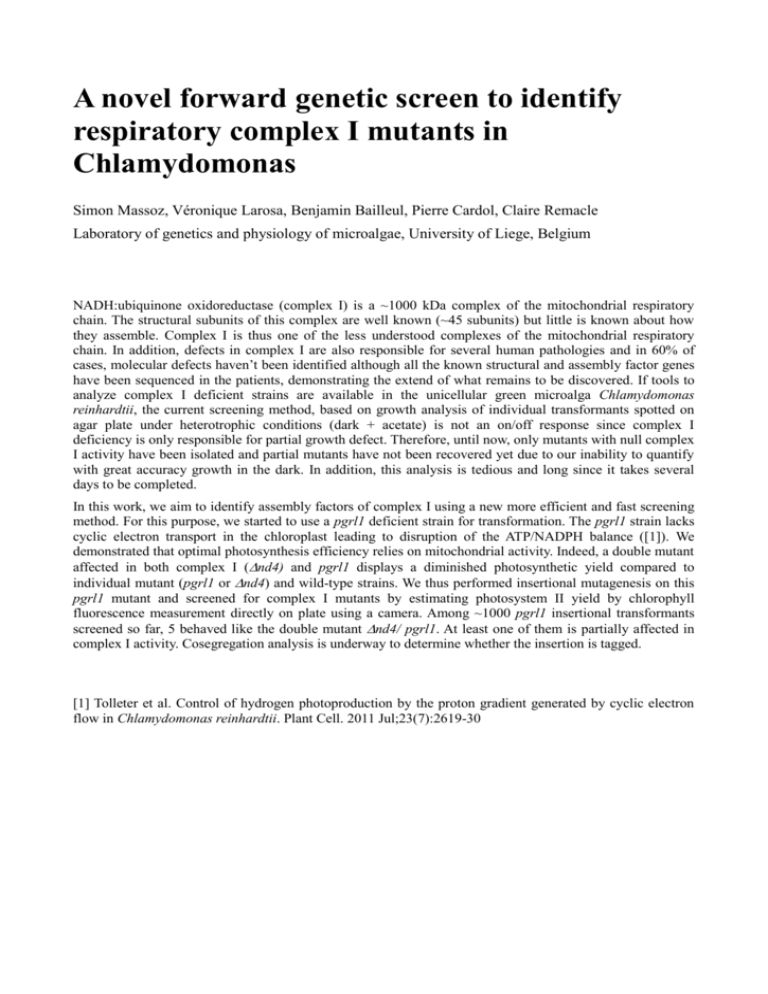
A novel forward genetic screen to identify respiratory complex I mutants in Chlamydomonas Simon Massoz, Véronique Larosa, Benjamin Bailleul, Pierre Cardol, Claire Remacle Laboratory of genetics and physiology of microalgae, University of Liege, Belgium NADH:ubiquinone oxidoreductase (complex I) is a ~1000 kDa complex of the mitochondrial respiratory chain. The structural subunits of this complex are well known (~45 subunits) but little is known about how they assemble. Complex I is thus one of the less understood complexes of the mitochondrial respiratory chain. In addition, defects in complex I are also responsible for several human pathologies and in 60% of cases, molecular defects haven’t been identified although all the known structural and assembly factor genes have been sequenced in the patients, demonstrating the extend of what remains to be discovered. If tools to analyze complex I deficient strains are available in the unicellular green microalga Chlamydomonas reinhardtii, the current screening method, based on growth analysis of individual transformants spotted on agar plate under heterotrophic conditions (dark + acetate) is not an on/off response since complex I deficiency is only responsible for partial growth defect. Therefore, until now, only mutants with null complex I activity have been isolated and partial mutants have not been recovered yet due to our inability to quantify with great accuracy growth in the dark. In addition, this analysis is tedious and long since it takes several days to be completed. In this work, we aim to identify assembly factors of complex I using a new more efficient and fast screening method. For this purpose, we started to use a pgrl1 deficient strain for transformation. The pgrl1 strain lacks cyclic electron transport in the chloroplast leading to disruption of the ATP/NADPH balance ([1]). We demonstrated that optimal photosynthesis efficiency relies on mitochondrial activity. Indeed, a double mutant affected in both complex I (nd4) and pgrl1 displays a diminished photosynthetic yield compared to individual mutant (pgrl1 or nd4) and wild-type strains. We thus performed insertional mutagenesis on this pgrl1 mutant and screened for complex I mutants by estimating photosystem II yield by chlorophyll fluorescence measurement directly on plate using a camera. Among ~1000 pgrl1 insertional transformants screened so far, 5 behaved like the double mutant nd4/ pgrl1. At least one of them is partially affected in complex I activity. Cosegregation analysis is underway to determine whether the insertion is tagged. [1] Tolleter et al. Control of hydrogen photoproduction by the proton gradient generated by cyclic electron flow in Chlamydomonas reinhardtii. Plant Cell. 2011 Jul;23(7):2619-30

